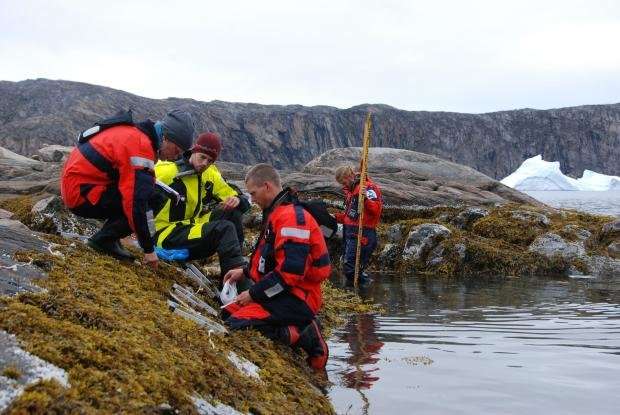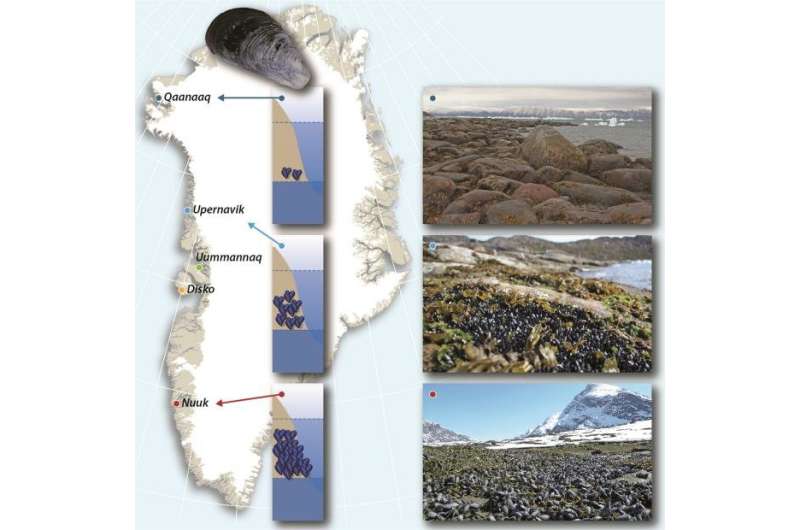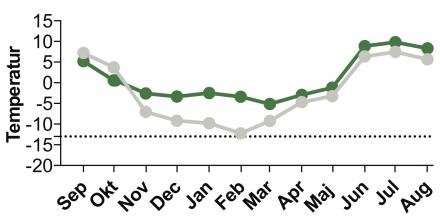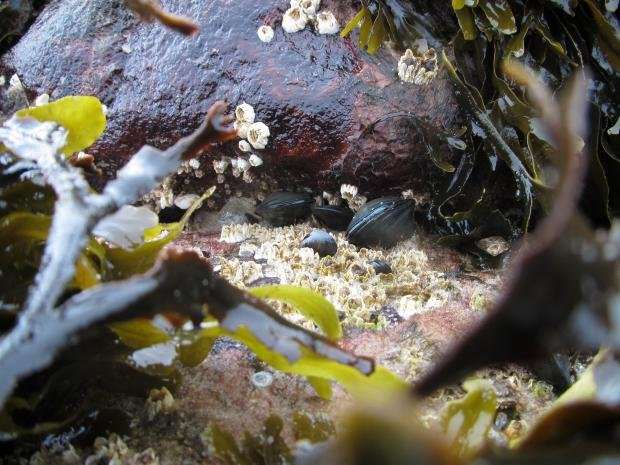Climate change draws invasive species to the Arctic

The Arctic is changing. Temperatures are increasing twice as fast as the global average and sea ice is retreating quicker than predicted.
It is now just a question of time before the Arctic becomes ice free in summer.
But while we humans react slowly to the problem at hand, evidence suggests that animals are on the move- on land, sea, and in the air. And in the cold Arctic, invasive species are drawn to regions where they could not previously have survived.
But invasive species pose a big problem for native animals, whose numbers can decline to the point of collapse. They also pose a threat to fisheries, with economic consequences on both a local and global scale.
In fact, our recent study showed that blue mussels have become much more common in the Arctic in recent years, just like other exotic species of bluefin tuna and killer whales.
Our results are published in the journal Marine Ecology-Progress Series.
More animals in the Arctic: Isn't that a good thing?
It may well sound like good news that a warmer climate means more mussels and bluefin tuna in Greenland. After all, new fisheries contribute to economic growth. But invasive species can have negative consequences where they out compete native animals for food.
In the North American Arctic, scientists have already seen the first signs of dwindling food sources for native eider birds. Their preferred prey, the Macoma calcarea (a type of mollusc) is being replaced by a poorer food source—a smaller mollusc with a thicker shell.

Puffins in Norway have also suffered. They have been observed to abandon their eggs and allow their young chicks to die, following an invasion of mackerel, which ate the same food as the young puffins and cut off their food supply.
The Arctic as a natural climate laboratory
Long term data sets of climate and environmental observations are an effective way to evaluate the effects of climate change on species distributions over time.
Unfortunately, only a few such data series exist in the Arctic. But there is another way to assess environmental changes. Instead of looking at changes over time, we can study the effects of a changing climate along a transect—an imaginary line that cuts through different types of climate zones.
We call this a climate gradient, and it simply refers to a distinct difference in climate from one location to another, which provides a type of natural, climate laboratory.
Collecting data over a large transect, for example along the coast of Greenland, means that we can use information collected from the southern (warmer) end of the transect to provide insights into how northern (colder) regions may look in the future.
Tracking species change along the Greenland coast
The west coast of Greenland is a perfect example of such a transect. The coastline spans a mild subarctic climate in the south to an extreme high Arctic climate in the north. In fact, it represents the longest such climate gradient in the Arctic, making it the perfect place to study the possible effects of climate on Arctic ecosystems.
At the Arctic Research Centre at Aarhus University, we use the intertidal zone (the part of the coastline that is exposed during low tide) of West Greenland to measure and assess the effects of climate change in this way.

Tidal zones are fantastic habitats for a number of species and provide protection against predators despite the low temperatures of the Greenlandic winter.
By mapping changes in biological diversity and distribution of species in the tidal zone, we can trace the impact of climate from the mild subarctic southern end of the transect right up to the cold, Arctic north.
Blue mussels as a climate indicator species today
Our results show that few mussels live in North Greenland today, preferring instead the warmer waters further south. In fact, the population density drops by 95 per cent as we follow the transect from the south all the way up to north Greenland.
We also saw that young mussels were particularly sensitive. Death rates were highest among young mussels, meaning that their chance of survival is decided early in life.
Only the mussels that make it past this critical stage reach adulthood, at which point they can live quite happily in both north and south Greenland.
Spatial data provides a sneak peak into the future
This tells us that blue mussels are rare in the high Arctic today, since they cannot survive exposure to air temperatures below minus thirteen degrees Celsius—temperatures in the Arctic regularly plummet below this for 100 to 200 days of the year.
In fact, they can only survive in very limited areas between stones and crevices in rocks, where temperatures are a few degrees warmer than the surrounding air, as shown in the graph above.

Our spatial analyses provide a new understanding of how the mussels survive across climate zones of the Arctic today and from this, we can begin to understand how mussels and other species may respond to climate change in the future.
Since the 1990s, the number of days with temperatures below minus thirteen degrees has fallen by 57 per cent in Greenland. Since cold days are the limiting factor for mussel survival in the Arctic, we expect that populations will expand as the Arctic warms and become ice-free.
We need more Arctic research
All of this leaves us with some important questions: Can we expect more invasive species in the future? And how will the native species respond to these newcomers?
The gloomy outlook underlines the importance of understanding how climate change could affect marine biology in the Arctic.
Unfortunately, our current knowledge is very limited. This was emphasised in a recent review paper (a collection of previous research), which showed that less than 10 per cent of all climate change studies were conducted in the Arctic.
We clearly need more research on the impacts of climate change in this sensitive region of the planet in order to protect these vulnerable and unique Arctic ecosystems.
More information: J Thyrring et al. Rising air temperatures will increase intertidal mussel abundance in the Arctic, Marine Ecology Progress Series (2017). DOI: 10.3354/meps12369
Thomas Wernberg et al. A decade of climate change experiments on marine organisms: procedures, patterns and problems, Global Change Biology (2012). DOI: 10.1111/j.1365-2486.2012.02656.x
Journal information: Marine Ecology Progress Series , Global Change Biology
Provided by ScienceNordic
This story is republished courtesy of ScienceNordic, the trusted source for English-language science news from the Nordic countries. Read the original story here.





















